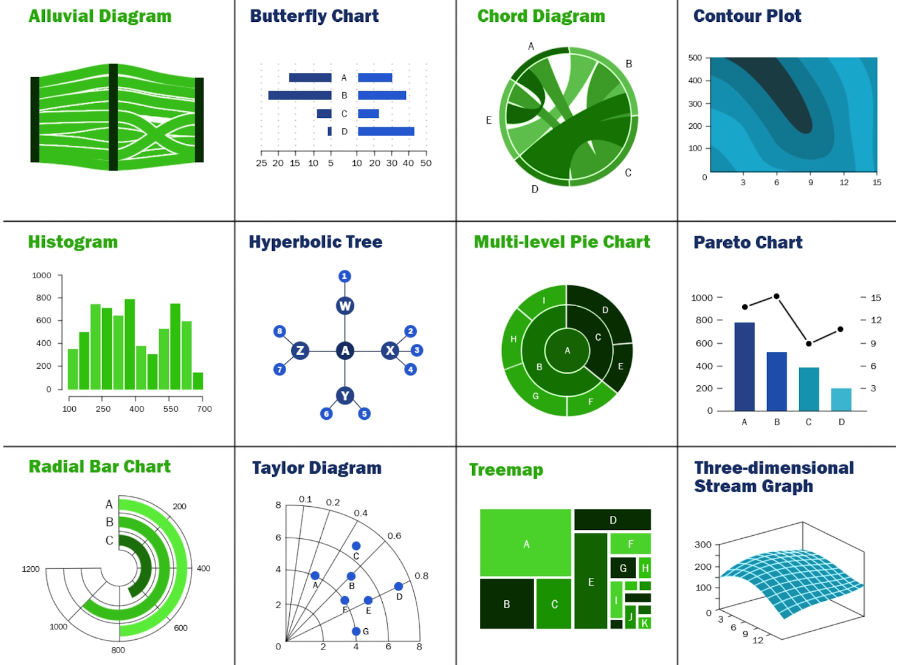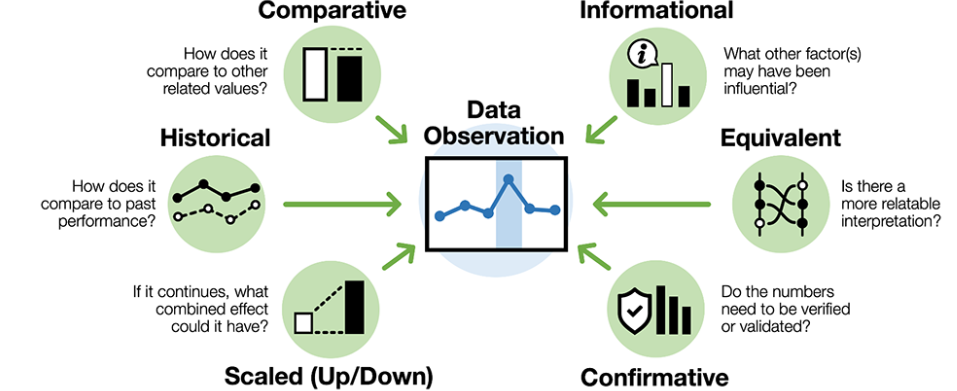Page contents
ToggleAnalyze data sets to understand what to process
A complete understanding of statistical tools is essential for analyzing complex data sets. Individuals are trained in the use of statistical software such as R, Python, SAS or SPSS, which are powerful tools for performing a wide range of statistical analyses.
Teach the basics of descriptive statistics, such as mean, median, mode, range, variance, and standard deviation, which help summarize data sets concisely. Training on methods Inferential statistics, including hypothesis testing, ANOVA, chi-square tests, and regression analysis, which allow researchers to draw conclusions about populations from sampled data. Introduction to non-parametric testing used when data does not necessarily match the assumptions required for parametric testing, providing flexibility in handling different data types and distributions.

Visual representations of data can make complex information easier to understand and interpret. Training on choosing the appropriate type of visualization based on the nature of the data and the specific insights sought. This includes line charts, histograms, pie charts, scatter plots, and more. Instruction in more complex visualizations like heat maps, contour plots, and dendrograms, which are useful for representing multidimensional data sets.

Use of software tools such as Tableau, Matplotlib or ggplot2 to create impactful and clear visual representations of data.
Error analysis
Understanding and analyzing errors are crucial to validate the reliability of experimental results:
Quantification of Errors : Techniques for quantifying measurement errors, including systematic and random errors, and methods for reducing them.

Confidence Intervals : Calculation and interpretation of confidence intervals to provide an estimate of where the true population parameter might lie with a certain level of confidence.

Sensitivity Analysis : Performing sensitivity analyzes to determine how different values of an independent variable affect a given dependent variable under a set of assumptions.

Interpretation techniques
Accurate interpretation of data is as critical as the analysis itself.
Correlation vs. Causation : Training on the distinction between correlation and causation, a common area of misunderstanding in data interpretation.

Impact of Sample Size : Understanding the impact of sample size on the reliability of results and statistical significance.

Interpretation of Contextual Data : Techniques for interpreting data in the broader context of research objectives and literature existing, ensuring that conclusions are valid and grounded in reality.

With these detailed techniques, researchers are equipped to accurately manage diverse data sets and effectively interpret their analyses, leading to reliable and scientifically sound conclusions. This comprehensive approach to data analysis not only improves the quality of research but also supports the credibility and reproducibility of results.
Structuring the Discussion Section
A well-structured discussion is crucial for articulating the relevance and implications of research findings. Developing a clear plan for the discussion section usually begins with a summary of the main results, followed by a detailed analysis comparing these results with existing knowledge. Researchers are guided on how to effectively integrate comparisons with previous research to highlight similarities, divergences, and advances made by the current study.
It is also essential to discuss the practical and theoretical implications of the results, explaining how they contribute to the field and suggesting potential applications in real-world scenarios.
Robust statistical validation is essential to establish the reliability of research results. Researchers receive training on selecting appropriate statistical tests based on data type and questions research, which includes understanding the use of parametric versus non-parametric testing.
Detailed guidance on the interpretation of p-values, confidence intervals and other statistical results is provided, emphasizing the importance of not exaggerating results based solely on statistical significance. Best practices for reporting statistical results are taught, following guidelines such as those in specific journal requirements to ensure transparency and reproducibility.
Critical evaluation of study results ensures that research is presented with integrity and credibility. Researchers are instructed on how to honestly discuss study limitations, including methodological weaknesses, constraints on the data, and factors influencing generalizability.
Potential biases in the study are identified and discussed to strengthen the trustworthiness of the research by providing a balanced view. Researchers are encouraged to consider alternative explanations for the findings, which promotes a more complete understanding and mitigates the risk of confirmation bias.
Proposing future research directions based on current findings can guide subsequent studies and highlight the evolving nature of the research. Researchers are advised to highlight gaps in the current study that future research could address, which could include suggesting specific areas for further investigation or new methodologies to explore.
Opportunities are given for future studies to build on the work by refining methods, exploring new variables, or applying findings to different populations or contexts. Discussing the long-term implications of the research and how it might influence future trends or policy developments in the field is also recommended.
Maintaining ethical standards in reporting is fundamental. Full transparency in how the data was collected, analyzed and interpreted is emphasized. This includes disclosing any conflicts of interest that could influence the results of the research. Researchers receive training on avoiding common pitfalls in misinterpreting data and promoting ethical considerations when formulating conclusions.
By adhering to these best practices for discussing results, researchers ensure that their findings are not only perceived as credible and scientifically sound, but also as relevant contributions to the field, ready to inform future research and application.
Limitations and Opportunities
Identifying areas for future research is essential to the continued development of any scientific field:
- Gap Analysis : Conduct an in-depth analysis of the current study findings and methodologies to identify gaps where additional research may be beneficial. This involves questioning each conclusion and explore alternative interpretations of the data.
- Emerging Trends : Stay abreast of emerging trends and technologies in the field that could open new avenues for research. Highlight how these trends could impact or be integrated into the current research area.
- Interdisciplinary Approaches : Encourage interdisciplinary research that can provide new perspectives and methodologies. Discuss how integrating different disciplines could address complex questions that a single field cannot.
Discussing unresolved challenges is not only about being honest about the limitations of the current study but also about setting the stage for resolving these challenges in future work:
- Technical Limitations : Detail technical limitations encountered in the research process and propose how future studies could overcome these problems. This could involve the development of new technologies or methodologies.
- Theoretical Questions : Highlight theoretical questions that remain unanswered or that were discovered during the research process. Discuss how these questions might be addressed in future theoretical or empirical work.
- Resource Constraints : Recognize resource constraints, such as limited data, insufficient funding, or inadequate tools, which may have hindered research. Suggesting how to overcome these constraints could enable more comprehensive future studies.
Providing specific recommendations for future research can guide next steps for researchers:
- Follow-up Studies : Recommend specific follow-up studies that could confirm, refute, or extend the current findings. This includes suggesting longitudinal studies, larger sample sizes, or different demographic groups.
- Methodological Improvements : Suggest methodological improvements or new research designs that could be employed to provide better or different perspectives on the research problem.
- Collaboration Opportunities : Identify potential for collaboration with other researchers or institutions to address large-scale or complex challenges that were beyond the scope of the current project.
By carefully detailing future research opportunities and unresolved challenges, researchers can contribute to a productive and progressive research environment, inspiring continued exploration and innovation in their fields.
